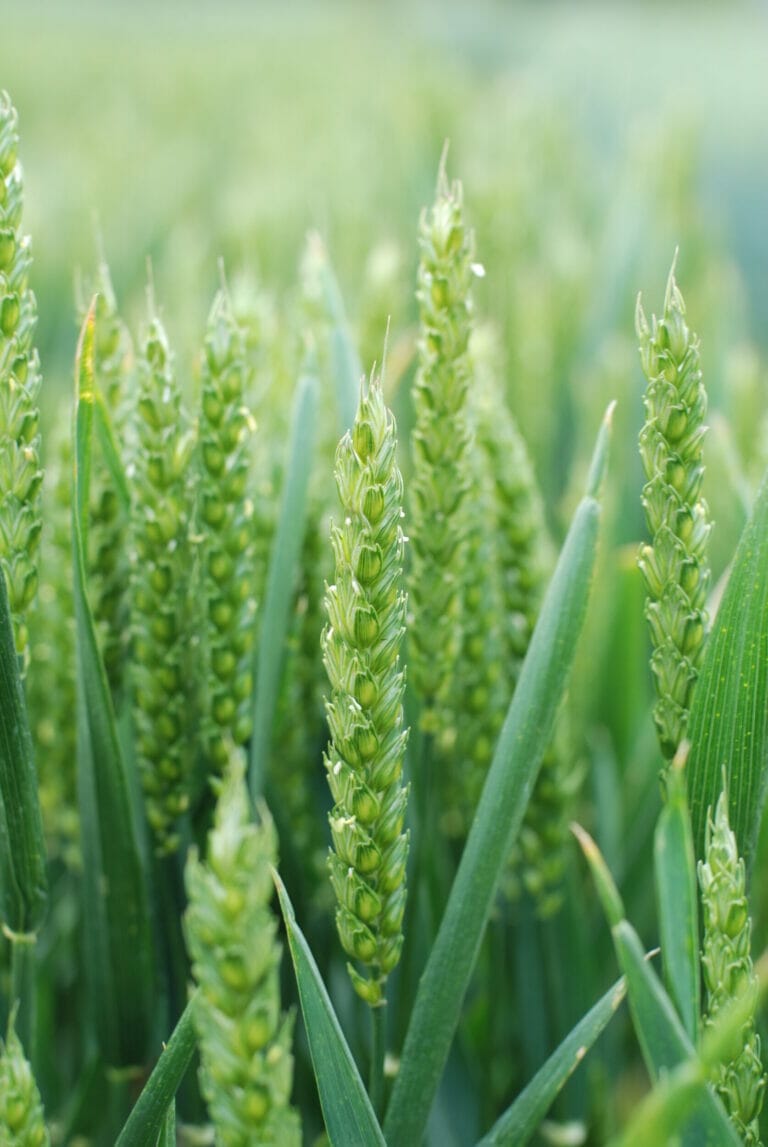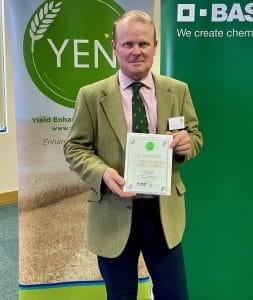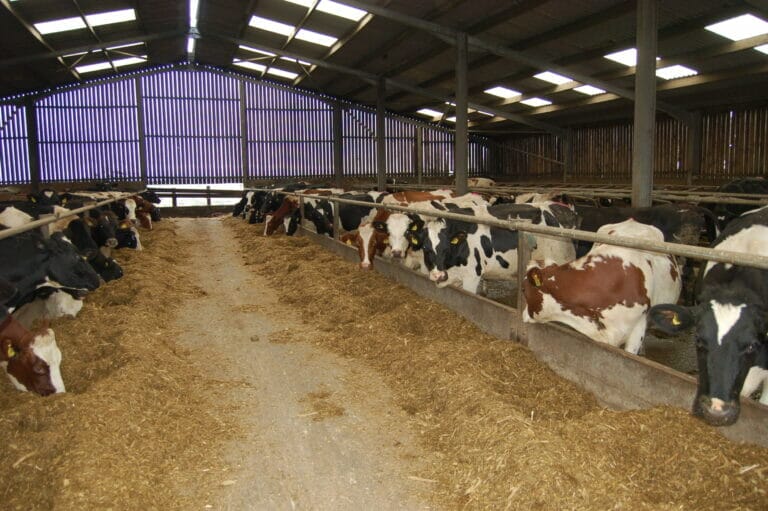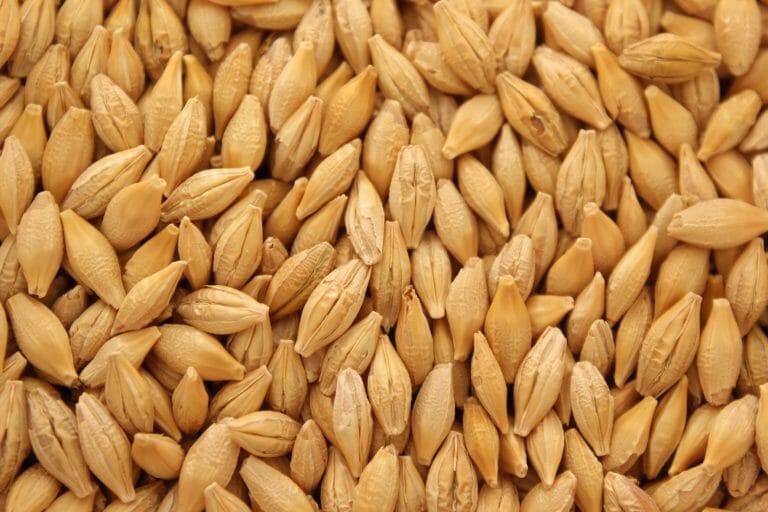
Limagrain UK’s benchmark milling wheat variety, Crusoe, has claimed the top three positions in the Yield Enhancement Network (YEN) Milling Wheat Quality awards.

Richard Budd
It is welcome recognition for the Group 1 variety that, in the 12 years since joining the AHDB Recommended List, has established itself as a firm favourite amongst growers and millers due to its consistent yield and quality performance, across a range of very different seasons.
First-place in the 2023 YEN award went to Richard Budd, of Stevens Farm (Hawkhurst Ltd), who grows around 220 ha of Crusoe across 1,400 ha in Kent and Sussex. The farm’s focus is on growing quality Group 1 and 2 wheats, to supply local flour mills and occasional export markets, and he values the reliability that Crusoe offers.
“We’ve only been growing Crusoe for three or four years, as previously we had been doing really well with KWS Zyatt and Skyfall. But, they both became uneconomic to grow due to their disease profiles, so last year we made the decision to go completely with Crusoe, which now accounts for one-third of our wheat area, alongside KWS Extase and Mayflower for the remainder.
“So far, Crusoe has served us well. It’s yielded well, is relatively clean and easy to manage, stands well and has a good specific weight, protein, and Hagberg. It’s a solid, stable variety.”
With milling wheat premiums touching £72/t over feed at the time of writing, and predicted to stay firm for the foreseeable future given tight European supplies, Mr Budd is cautiously optimistic for the 2024 harvest, despite a challenging start to the season.
“Admittedly, I’d like an extra 5% yield, but I understand UK flour millers may be less keen on that due to the potential protein dilution. We do need some new genetics in the Group 1 sector, but at the moment, Crusoe is our default variety.”
Hitting protein spec

Chris Eglington
Norfolk Crusoe grower, Chris Eglington, won gold in the 2022 YEN Milling Wheat Quality awards, and claimed silver with the variety in 2023, recording the highest grain protein of 13.7% and one of the highest specific weights at 78.2 kg/hl for his 10.5 t/ha crop.
He too values Crusoe’s performance in what was a tricky 2023 season.
“Yes, it’s been around a while now, but it’s great to have a variety that we know how to manage and know will perform well.”
Last year’s crop followed oilseed rape, with land cultivated using an 8-metre Väderstad Carrier prior to drilling on 14 September, then rolled and a residual herbicide applied.
Variable rate potash, lime (where required) and nitrogen applications are used across the farm, and he has worked closely with grain buyer Camgrain, and in the past with Sainsbury’s, to optimise nitrogen inputs and protein.
Mr Eglington recognises nitrogen management could be more challenging this spring, given the impact of the exceptionally wet autumn and winter on residual soil levels.
“We’re already towards the top of what we can apply in terms of nitrogen, so I don’t think our programme will change drastically. We’ve always found the highest yields come in years when we’ve managed to get nitrogen on early, and fortunately we did manage to apply the first lot of nitrogen during a narrow window in early February, and might apply some more in early March, depending on how the crop looks.”
Typically, first wheats receive a total of 280 kg N/ha, applied as four splits of solid granular fertiliser, sometimes supplemented with a small amount of liquid urea towards the end of the season (June), to help build grain protein if required.
Regular tissue testing is also used to adjust the nitrogen programme according to crop need.
Mr Budd also recognises the importance of early nitrogen to support tillering and biomass accumulation, and has previously seen good results from applying two large splits of 80-90 kg N/ha when conditions allow in February, and again in late March/ early April. Tissue testing is then used to refine later applications according to crop requirements.
Staying disease free
Mr Budd’s nutrition strategy is supported with a robust, preventative fungicide programme, tailored to disease pressure around each spray timing and varietal resistance. His aim is to keep upper and lower leaves free from disease as long as possible, rather than relying solely on the flag and leaf two to build yield.
“With our direct/ strip-till system, we find that if we can keep leaves 3, 4, and even 5 and 6 relatively clean throughout the year, they are still contributing quite a lot to final yield, right up to cheesy ripe stage.
“That said, we’re not applying maximum rate fungicides all of the time; decisions are guided by what’s there at the time, and varietal choice.
“I like Crusoe; it is a relatively easy, clean variety, with good Septoria scores, and yellow rust is non-existent really.”
Late-season brown rust is something to watch out for in some years, but even that is relatively easy to control, with a good range of chemistry available, he notes. “As an industry, we need to be looking more at genetics rather than a can.”

Edward Vipond
Confidence to invest
Having confidence in a variety’s ability to regularly achieve milling specification is vital for Suffolk farmer Edward Vipond, who says Crusoe has become the “go-to” variety in the first wheat slot at the 1,400 ha Troston Farms, near Bury St Edmunds.
The farm grew 160 ha of Crusoe last season, and has increased this to 224 ha for 2024.
“When you’re spending a lot of money on fertiliser to obtain a milling premium, applying 270-280 kg N/ha for example…
“…you need confidence that the crop will deliver in terms of protein, and Crusoe does that. Protein is as much down to the variety’s genetics as how you manage it.”
He also notes that Crusoe seems more consistent than other milling wheats grown on the farm. “For us, even at yields of 10.5 t/ha, it will still regularly obtain 13.3-13.5% protein.”
Last season’s wet summer did pose challenges for protecting quality, with milling wheats prioritised for harvesting slightly earlier than they might have been in a drier year, Mr Vipond says.
This did raise a few issues with thrashing on the combine, resulting in some unthrashed tips in the grain sample, but he insists the benefits of hitting milling specification far outweighed any drawbacks.
“There aren’t that many other competitors in the Group 1 list at the moment. There are one or two coming in, but they’re yet to be proven and have got to do something special to knock Crusoe off. Crusoe suits our land and it delivers.”
Mr Vipond says flexibility and attention to detail are key to getting the best from any crop, particularly in terms of drilling date, seed rates, nutrition and other inputs. He generally drills Crusoe in early October to reduce BYDV risk, opting for seed rates of around 325-350 seeds/m2.
There is no fixed cultivation or drilling strategy though, instead the farm opts for whichever equipment suits conditions at the time. Some fields after potatoes or onions, for example, are established with a plough and combination drill, while others may receive a non-inversion deep tine (e.g. Sumo Quatro) before drilling with a disc or tine machine. “Every season is different, so we do what is required.
“Yield is still king, and if you can get decent yields of good spec milling wheat at a premium of £50-60/t, the return is still there. With the results we had from Crusoe last year, what’s not to like?”
Summary of the top three YEN wheat samples, all Crusoe
|
|
Gold (Richard Budd) |
Silver (Chris Eglington) |
Bronze (Edward Vipond) |
|
Yield (t/ha) |
11.9 |
10.5 |
10.4 |
|
Moisture (%) |
15 |
14.4 |
14.1 |
|
Protein (%) |
13.6 |
13.7 |
13.3 |
|
Specific weight (kg/hl) |
76.2 |
78.2 |
76.9 |
|
Hagberg (seconds) |
334 |
368 |
349 |
































